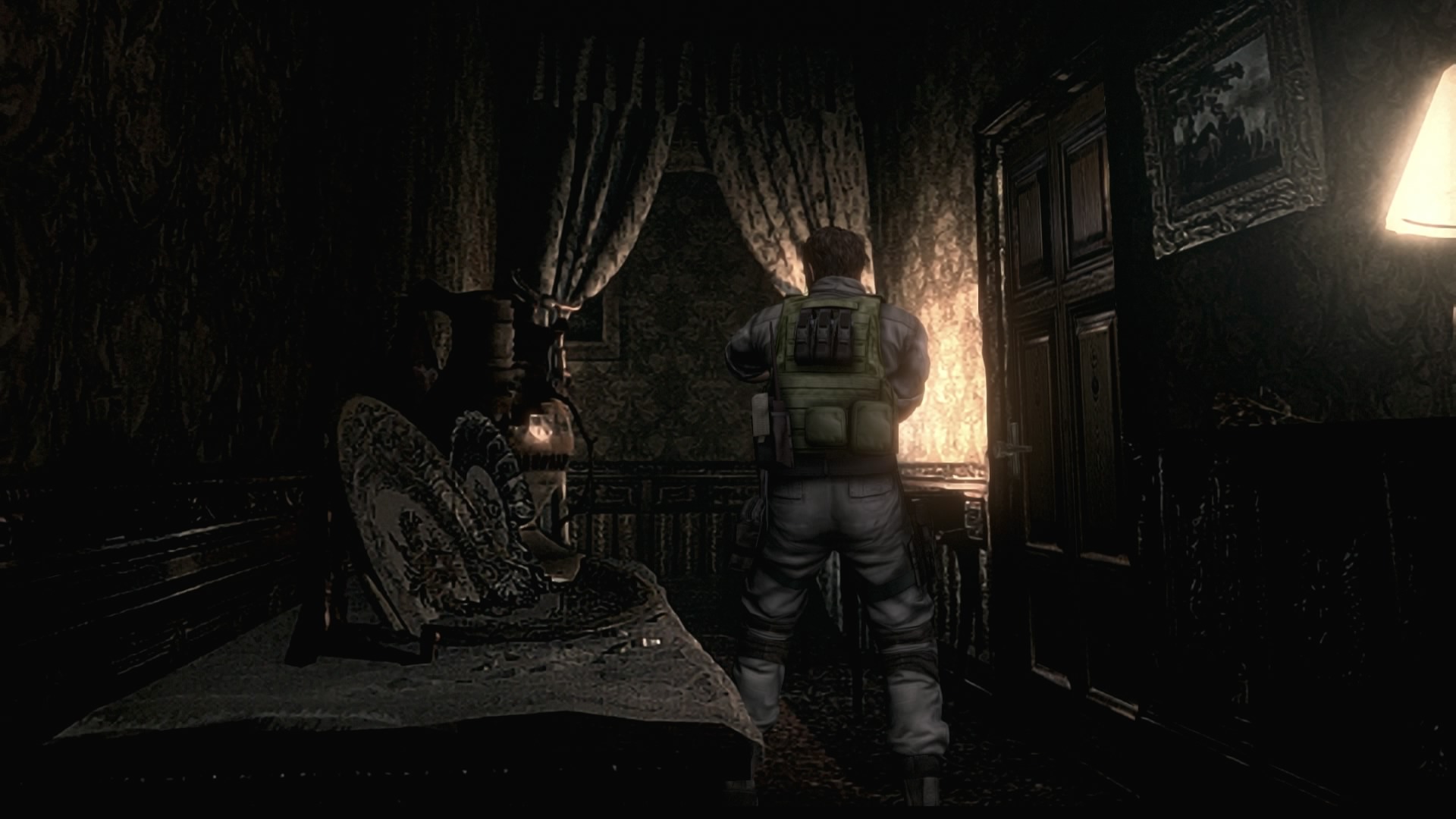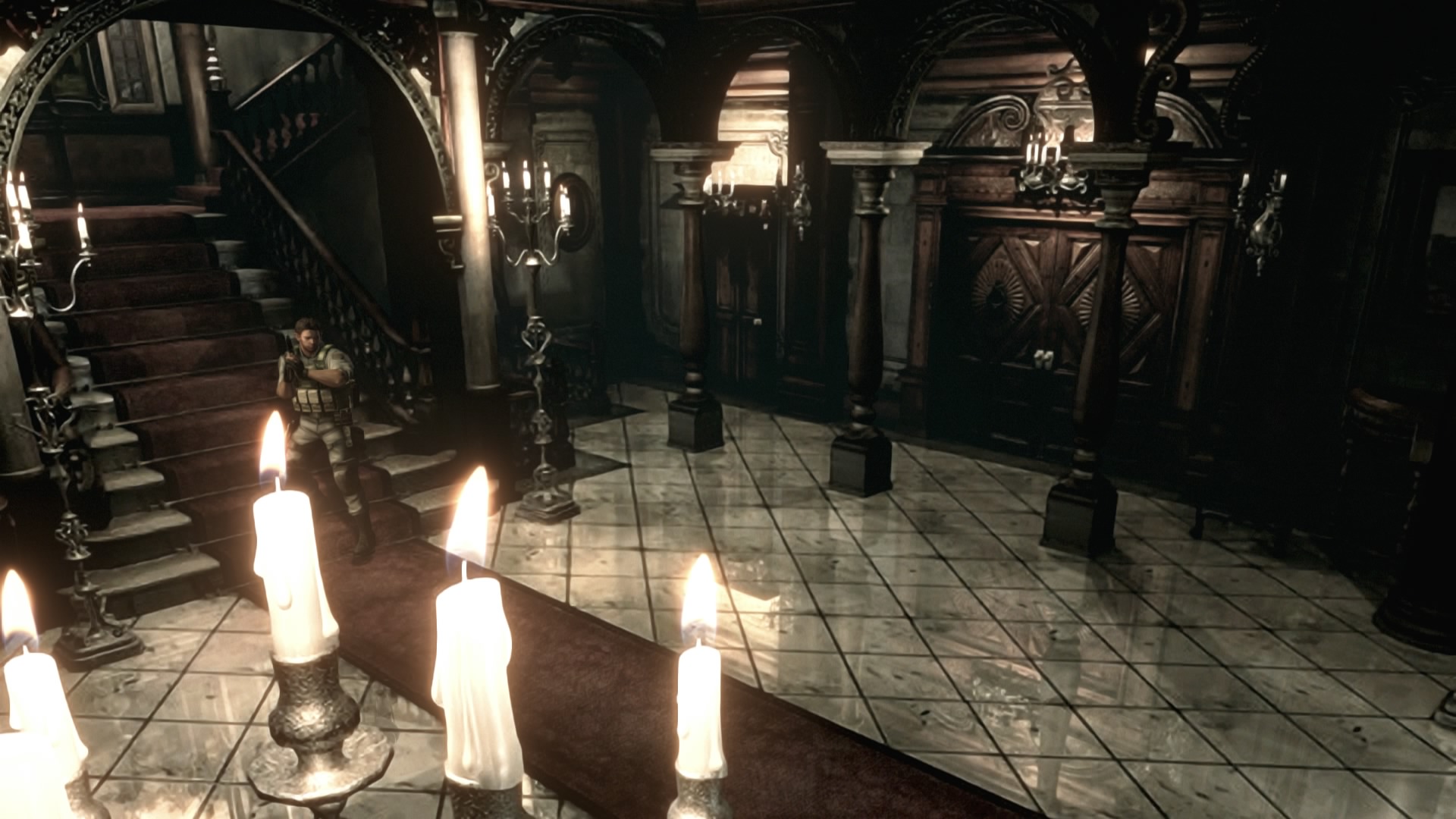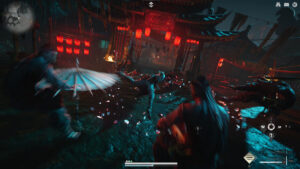
Capcom have been on something of a hot streak since 2017’s Resident Evil 7 rejuvenated the blueprint of their marquee survival horror franchise. In the remakes that followed – 2019’s critically acclaimed Resident Evil 2’s remake, Resident Evil 3, – Capcom crafts distinctly reimagined experiences, noticeable immediately in a perspective shift from fixed camera angles to over-the-shoulder in RE2 and 3, but also in wholesale recontextualisation of the games’ environments and settings. The Raccoon City Police Department we tread through as Leon Kennedy and Claire Redfield in Resident Evil 2 Remake is identical in essence to the vision of its 1998 original, but grandiose in scope and scale. The remake realises the potential of the original, breathing new life into its dimly lit corridors, exuding a deeper sense of horror in every zombie encounter beyond what the 1998 original was capable of.
In 2002, a remake of the original Resident Evil was released for GameCube. When remaking 1996’s Resident Evil, Capcom deliberately avoided a simple redecoration of the game’s principal location the Spencer Mansion, instead opting to refresh the game’s puzzles alongside the addition of new mechanics and fresh surprises to twist the original into something deeply unsettling for seasoned players as well as newcomers. New threats in the form of Crimson Heads ramped up the difficulty too, reanimating from the corpses of zombies left intact by players providing an extra consideration to the game’s already painstakingly tight resource management.
Ultimately, Capcom harnessed the essence of good horror for 2002’s Resident Evil remake: they took the familiar and made it unfamiliar. In the years since, fans haven’t failed to notice that the spate of third-person Resident Evil remakes has completely skipped Resident Evil 1. Yes, the game has already been remastered, with an HD remastered version coming in 2015 solidifying Resident Evil 2002 as an experience which still holds up today, but does the Spencer Mansion not deserve the same treatment as the Raccoon City Police Department? Why has Capcom decided to skip remaking Resident Evil 1’s remake?
The only credible explanation which comes to mind is perhaps with the HD remaster coming in 2015, and with fans at this time already screaming for a Resident Evil 2 remake, Capcom felt they couldn’t plough resources into a 4th iteration of the game so soon and still expect fans to pay, so instead forged ahead with remaking Resident Evil 2.
This is a shame, and perhaps in future will be looked back on as a missed opportunity, for Resident Evil 1’s crowning achievement, principal reason for its iconic status, and primary driver behind the need for a modern remake is the game’s haunted setting, the aforementioned Spencer Mansion. Arguably amongst the most famous haunted houses in video games, the Spencer Mansion sits alongside Hill House or, say, the Event Horizon, as the most evocative of haunted locales in all of media. Sure, the evils within the Spencer Mansion’s residence are artificially manufactured; they’re factory-made biological weaponry in the form of scrawling undead. But remember, the Spencer Mansion is artificial too. It’s dim labyrinthine hallways were never intended to be homely. Instead, the mansion’s purpose was a front to mask the entrance to Umbrella Corporation’s nefarious laboratories buried within its belly. Its non-sensical, maze-like design was deliberately intended to bewilder intruders. For this reason, the Spencer Mansion provides the perfect backdrop, evolving beyond stoic bricks and mortar into an entity which feels alive, an environment conducive to evil, a space in which malevolence can thrive and prosper.
The Spencer Mansion is a threat to player survival just as much as the zombies lurking within. Its corridors are laced with traps, notably including 2002’s additional area the Armour Key corridor, with its tightening walls and unsettling, spinning blade-equipped statue hellbent on destroying anyone in its path. Resident Evil’s over-the-shoulder remakes have excelled in maintaining the dread and suspense of their originals’ fixed camera angles. Blind corners, deep shadows, and sparse, selective, gloomy lighting have sustained the feeling of danger lurking just outside of view. There is no reason to assume Capcom can’t replicate the oppressiveness and claustrophobia of 2002’s Spencer Mansion in a modern, third-person over-the-shoulder remake. Furthermore, the advances in directional and 3D audio will only heighten the sense that there are immediate and irrepressible dangers lurking within the darkness; even if the player can’t see them, they’ll certainly hear them.
Successful remakes, then, don’t simply redeliver the same experience again. No, they cherry-pick the most evocative characteristics of the original and reinterpret and repackage into an experience that enhances those most cherished characteristics. The memory of the original is still strong, but there is something altogether new at play. Subtle changes to the Spencer Mansion were one of the principal successes of 2002’s remake; where solving a puzzle once yielded a weapon, it instead unleashed a monster. A once semi-comfortable yellow pulse must now be considered a touch-and-go health status. It’s a mechanism Capcom employed marvellously to keep revisiting players on their toes, forcing them to re-explore with newfound trepidation instead of relying on memory and nostalgia to see them through.
Another facet of successful remakes is their ability to overcome any shortcomings in the originals, and the original Resident Evil alongside its 2002 remake do share a fair amount of limitations. Most notably, the game’s infamous tank controls – loved and loathed in equal measure – were necessary at the time to direct Jill Valentine and Chris Redfield through the Spencer Mansion’s pre-rendered environments effectively. However, tank controls did not interact well with weapon aiming. Many an occasion was spent wasting bullets, spraying them wayward beyond the head of a lurching, slow motion zombie.
This shortcoming perhaps added to the tension of every encounter, although it’s doubtful this is what Capcom intended as instead of persevering with every cumbersome encounter in the 1996 original fleeing became the most viable option, this avoiding frustration rather escaping a situation through fear. The aforementioned Crimson Heads in the 2002 remake – fiercer, more intelligent, faster moving undead foes, reanimating from the corpses of regular zombies if it isn’t burned or beheaded – were introduced to rectify this issue. With scant resources, the choice to fight or flee wasn’t based purely on whether one had the patience to persist with the game’s unwieldy shooting anymore, although the viability of running away due to struggling with weapon aiming remained unfixed. A third-person, over-the-shoulder perspective would undoubtably eradicate the chances of frustrating zombie encounters altogether.
Those fixed camera angles also had a habit of obscuring fundamental visual information too, making progression unfairly difficult or time consuming. Even with 2002’s texturally revamped remake, superseding the limited power of the PlayStation with higher resolutions and improved graphics achievable on the GameCube, there were still times when it was hard to pinpoint exactly where to go. The visuals of the 1996 original haven’t aged especially well either. They’re not bad by any stretch, but whilst the 2002 remake’s subsequent HD remaster presents the same 3D models superimposed onto pre-rendered backgrounds, replenished with revised real-time lighting and a strong contrast between the game’s sparse light sources and shadow detail, there remains the overriding sense that the Spencer Mansion could be even more immersive if translated into a 3D environment.
2002’s Resident Evil remake is already a solid re-envisioning of the 1996 classic, but what the over-the-shoulder remakes of the modern era prove is that there’s massive scope for further revitalisation.
Note: The views expressed in this article are those of the author and do not necessarily represent the views of, and should not be attributed to, GamingBolt as an organization.
















